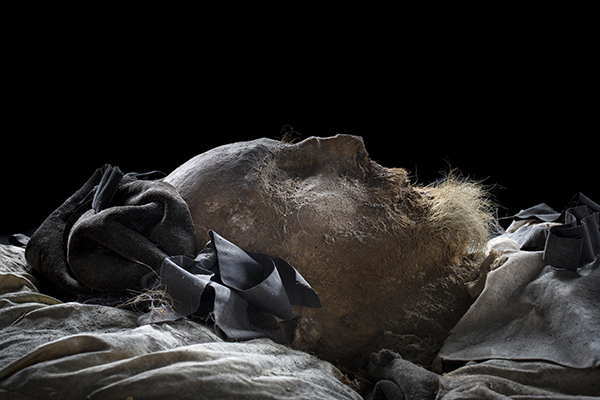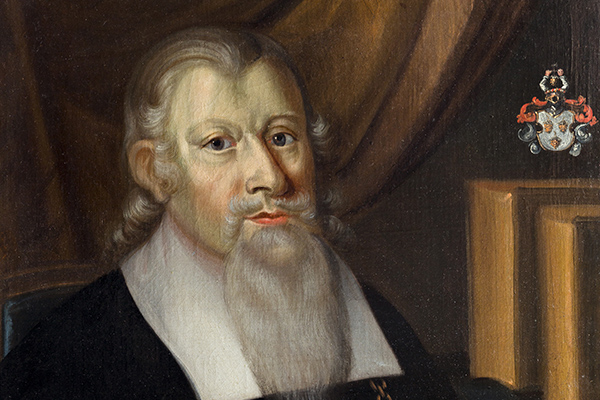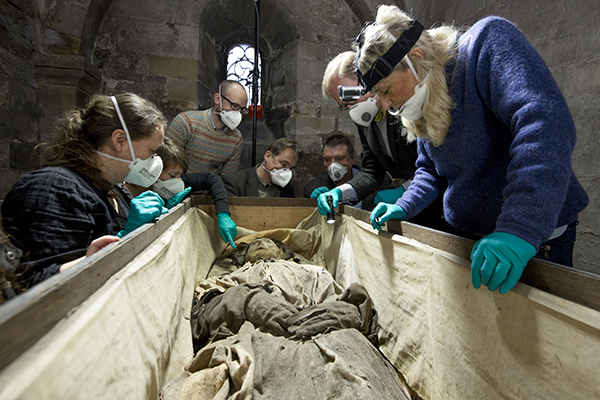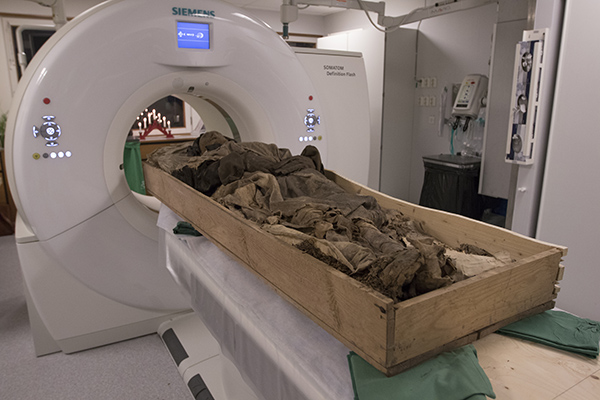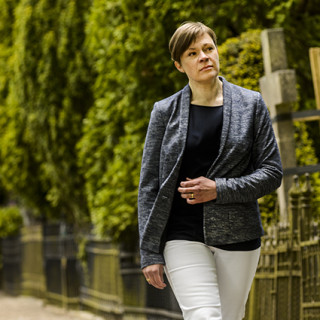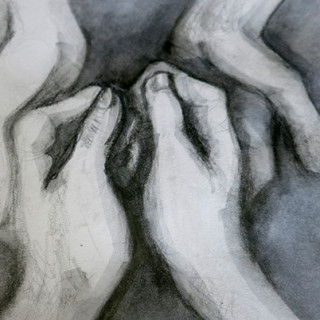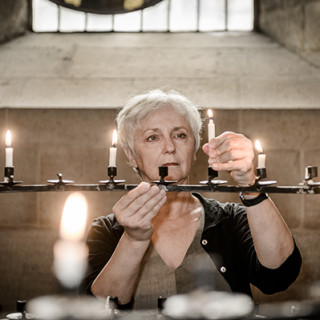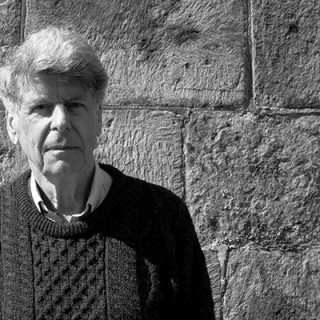Mummified bishop in a unique time capsule from the 1600s
The mummy of Peder Winstrup is one of the most well-preserved bodies from the 1600s. Initial examinations made a sensational discovery: the inner organs are still there. This provides unique opportunities to learn more about people living in Lund in the 1600s.
“We can now establish that Winstrup’s mummy is one of the most well-preserved bodies from 17th century Europe with an information potential well in line with Ötzi the Iceman or Egyptian mummies. His remains provide a unique medico-historical archive providing knowledge about people’s living conditions and health in the 1600s”, says Per Karsten, museum director at the Lund University Historical Museum and project manager for the Winstrup project.
The coffin containing Bishop Peder Winstrup’s body was moved from Lund Cathedral to the conservation department at the Historical Museum last September. Since then, a series of archaeological and medical examinations have been initiated. The coffin and its contents constitute a unique time capsule from 1679 with a well-preserved body, textiles and plant materials.
Normally, the inner organs are removed, but in this case, the body had not been embalmed in a traditional manner, but simply dried naturally. The good condition of the body seems to be the result of multiple interacting factors: the plant materials in the coffin, a long period of illness and subsequent weight loss, the fact that the death and funeral took place during the winter months December–January, and the overall climate and temperature conditions in the Cathedral.
In December, Peder Winstrup’s body was CT scanned at the Skåne University Hospital in Lund. Osteologists Caroline Ahlström Arcini and Torbjörn Ahlström examined the body together with radiologist Gracijela Bozovic. The initial results showed that the body is relatively well preserved, and most of the internal organs were possible to identify.
The initial results showed dried fluids and mucus in the sinuses, which indicates that he was bedridden for a long period before he died. Calcifications in his lungs could suggest both tuberculosis and pneumonia. The results also showed plaque in the left coronary arteries in his heart, the aorta and the carotid artery, which shows that he had suffered from arteriosclerosis.
“The gall bladder also had several gallstones, which among other things could indicate excessive intake of fatty foods”, said Caroline Ahlström Arcini.
The 74-year old Peder Winstrup also suffered from degenerative arthritis (osteoarthritis) in his knees and hip joints. He had also lost several teeth. In a couple of remaining teeth the researchers found traces of cavities, indicating that he had access to sweets.
“His right shoulder was slightly higher than his left, caused by an injury to a tendon in his shoulder. This led to Winstrup having limited mobility, making it difficult to perform simple everyday tasks such as putting on a shirt or combing his hair with his right hand”, said Caroline Ahlström Arcini.
An unexpected discovery of a foetus
The CT scan also made an unexpected discovery: A 4–5-month-old foetus that had been well hidden in the coffin, below Winstrup’s feet. Who placed the foetus there remains unknown.
“One can only speculate whether it was a relative of Winstrup or one of the people who prepared the coffin who seized the opportunity. However, we hope to shed light on a possible relationship through DNA testing”, said Per Karsten.
We can soon expect to see investigations of the textiles found in the coffin and additional examinations of the body, including taking tissue samples from the inner organs. The extensive plant materials found in the coffin will also be examined.
The Bishop has been buried in the Cathedral since 1680, but the coffin was moved a number of times. In 1875 the coffin was placed in one of the crypt chapels for the time being. It is still not entirely clear where the coffin will be placed after all the investigations are completed.
“The Cathedral is rich with treasures, and the new knowledge about Bishop Peder Winstrup is among them. Now we will decide how to best process the knowledge and find a good place for him”, says Bishop Johan Tyrberg of the Diocese of Lund.
Text: Jonas Andersson
Photo: Gunnar Menander


